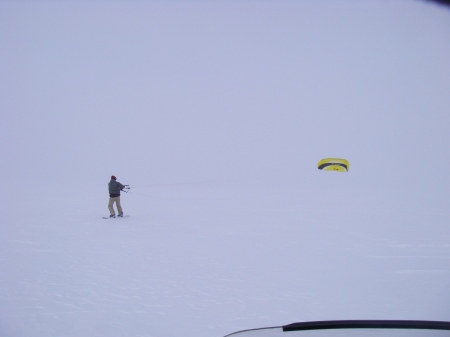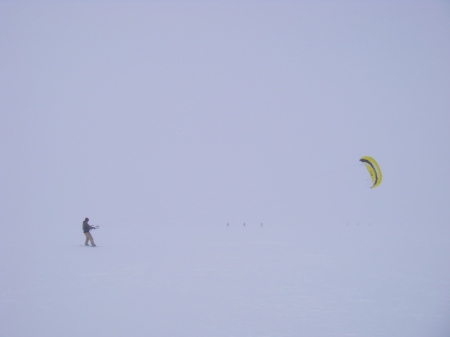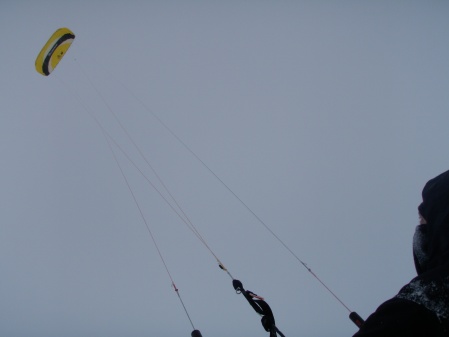In case you thought the seasonal transition to autumn was all work and no play at Greenland’s Summit Station, think again. In between winterizing the buildings and tying up loose ends before the darkness and cold descend, the five-person crew at Summit took advantage of recent “warm” temperatures (minus 20 degrees Celsius) and steady winds at 15-20 knots to go kite boarding.
Summit Station manager Andy Clarke gave us the scoop on this unusual past time.
FS: What kind of equipment do you use?
Andy: The kite we have up here right now is a HQ Beamer traction kite. It’s a four-square meter kite we fly just for fun. And the snowboard is an old NALE-brand board I bought at Boulder Ski Deals in the late ’90s. It’s retired now from the slopes and has come to Summit. The board has regular bindings that you can fit any boot into.
PFS: Do you strap into the kite in a harness?
Andy: Not really. Sometimes we use an old fall protection waist strap, to hook into. But normally we just hold onto the standard bar of the kite.
PFS: What are ideal kite boarding conditions?
Andy: When you get the wind you want—when it’s blowing about 20 miles per hour. When a storm comes, that means wind and warmer temperatures. A few weeks ago (when these pictures were shot), we had great weather. Right now it is minus 45C and it’s a little hard to hang around outside flying on a kite at that temperature.
PFS: Where do you go?
Andy: There is a ski-way the planes land on and it gets groomed all summer and is about three miles long. That’s where we like to go in the winter when it’s not in use.
PFS: Is it harder to kite board in the Arctic than elsewhere?
Andy: The polar regions are known for low pressure weather systems that make it feel like the elevation is much higher. Over a 12 hour period our physio, or pressure altitude can go from 10,500ft to 12,000 ft. Kiteboarding at that elevation combined with the cold dry air make it a bit of a challenge. Also, for us there is nowhere to go but downwind for awhile… Then we have to somehow get back.
PFS: Why do it?
Andy: People do it sometimes as a traversing expedition here; they use skis and a kite and a sled to cross the ice sheet. It’s a way to get around faster. But we just do it for fun.






 Posted by writer walker
Posted by writer walker